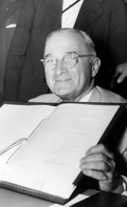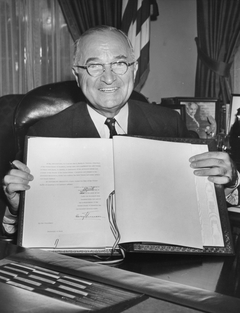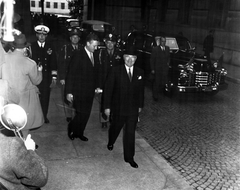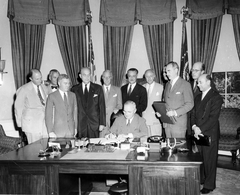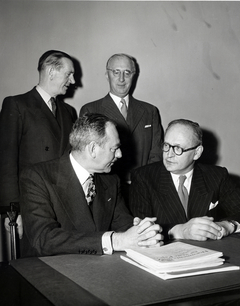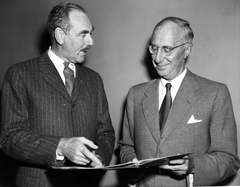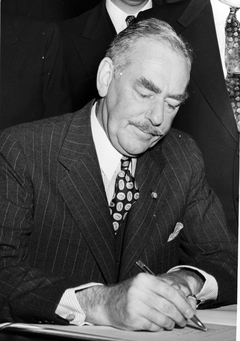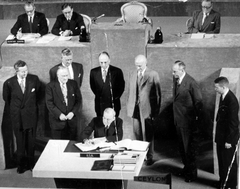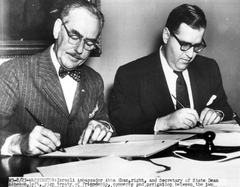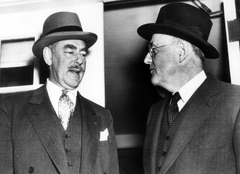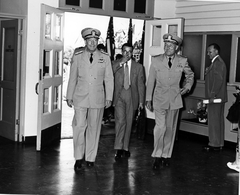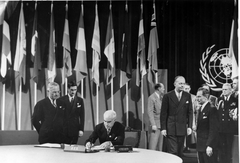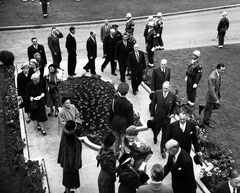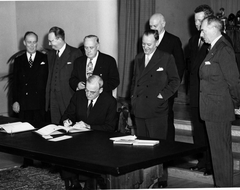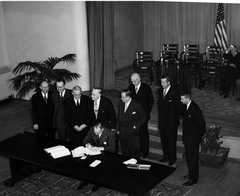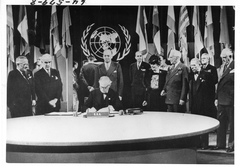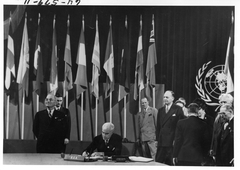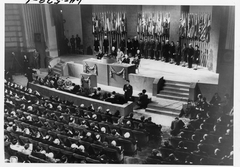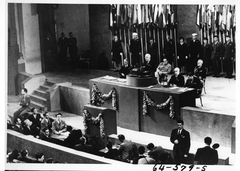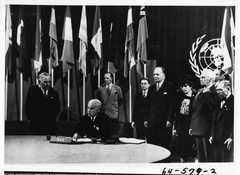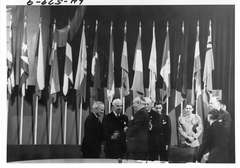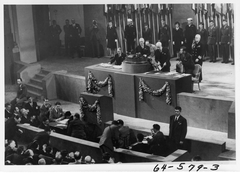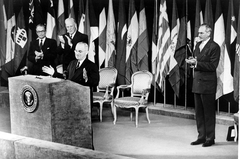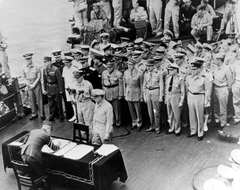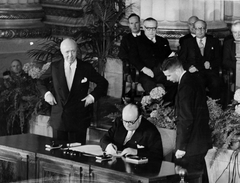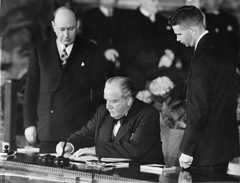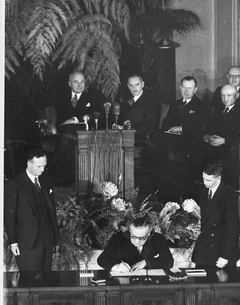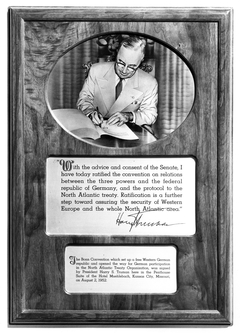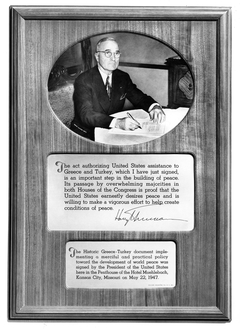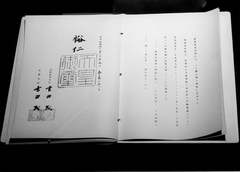This collection focuses on the creation of and United States participation in the North Atlantic Treaty Organization. The collection includes 107 documents totaling 418 pages covering the years 1948 through 1952. Supporting materials include photographs, oral history transcripts, a guide to archival materials, a chronology of events and other links.
The Development of the North Atlantic Treaty Organization (NATO)
Documents
Displaying 1 - 55 of 55 documents
1948
1949
1950
1951
1952
Background
1949
- January 20: Truman is inaugurated as President of the United States. In his inaugural address, he outlines a "program for peace and freedom" which includes four major points: 1. Unfaltering support for the United Nations. 2. A continuation of programs, especially the Marshall Plan, that will create world economic recovery. 3. The creation of collective defense arrangements, and especially one for the North Atlantic region (which would become NATO). 4. A program of technical assistance for underdeveloped areas (which would become the Point Four program).
- March 18: The text of the proposed North Atlantic Treaty is made public by the seven nations that drafted it--the United States, Canada, Great Britain, France, Belgium, the Netherlands, and Luxembourg.
- March 31: The Soviet Union sends identical messages to the seven nations involved in drafting the charter of the North Atlantic Treaty which charge that the proposed treaty would form an "openly aggressive" alliance against the Soviet Union in violation of the United Nations Charter. On April 2, the foreign ministers of the twelve nations that signed the North Atlantic Treaty two days later responded that the treaty provided for an alliance that was completely defensive in nature and "not directed against any nation or group of nations but only against armed aggression."
- April 4: The North Atlantic Treaty is signed in Washington, DC by representatives of Great Britain, France, Belgium, the Netherlands, Luxembourg, Norway, Denmark, Iceland, Italy, Portugal, the United States and Canada.
- July 5 - 8: The Senate debates ratification of the North Atlantic Treaty.
- July 21: The Senate approves the ratification of the North Atlantic Treaty by a vote of 83 to 13.
- July 25: President Truman announces the ratification of the North Atlantic Treaty. "The American people value peace and freedom above all things," Truman said. "Our ratification of the North Atlantic Pact with the overwhelming support of the Senate and the people shows our determination to preserve this peace and freedom."
- July 25: President Truman sends a special message to Congress recommending the passage of legislation to authorize a military aid program. He requests authorization for $1,400,000,000 in military aid in 1950, the major portion of which would be devoted to the needs of Western European nations. Truman believed this aid program was a necessary complement to the North Atlantic Treaty. "Like the North Atlantic Treaty," he said, "this program of military aid is entirely defensive in character. By strengthening the defense establishments of the free nations, it will increase the confidence of the peoples of the world in a peaceful future and protect the growth of world recovery."
- August 22: President Truman gives a speech to a convention of the Veterans of Foreign Wars in which he argues that the United States must provide military assistance to democratic nations, and particularly to the North Atlantic Treaty countries. "...We have forever put behind us the false security of isolationism," Truman said. "...We have learned that the defense of the United States and the defense of other freedom-loving nations are indivisible."
- August 24: The North Atlantic Treaty comes into effect. President Truman issued a statement which emphasized the global responsibilities accepted by the North Atlantic Treaty signatories. "By this treaty," he said, "we are not only seeking to establish freedom from aggression and from the use of force in the North Atlantic community, but we are also actively striving to promote and preserve peace throughout the world."
- October 5: Representatives of the 12 signatory nations of the North Atlantic Treaty, convened as the Defense Committee of the North Atlantic Council, meet for the first time following the coming into effect of the treaty. They establish a Military Committee headed by Omar N. Bradley, which is charged with drafting a defense plan for the North Atlantic area.
- October 6: President Truman signs the Mutual Defense Assistance Act, a military assistance act which authorizes the distribution of about $1.3 billion in arms, equipment, and technical assistance to several areas of the world, particularly to Western Europe. Truman had requested this legislation on July 25, 1949, the same day he announced the ratification of the North Atlantic Treaty, and he regarded it as a necessary supplement to the treaty.
External Links
Photographs
Displaying 1 - 42 of 42 images
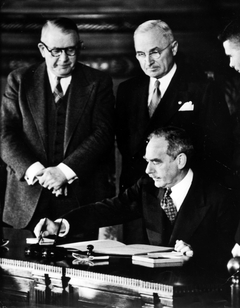
President Truman watch as Sec. of State Dean Acheson signs the North Atlantic Defense Treaty
97-2230
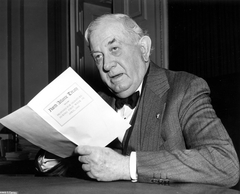
Photo of Senator Tom Connally (D), Texas, reading the text of the NATO Pact
99-268
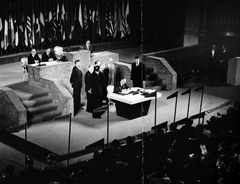
Secretary of State Dean Acheson Signing the Document During the Japanese Peace Treaty Conference
98-141
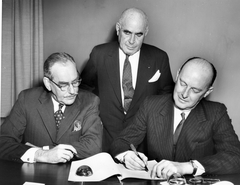
Canadian Ambassador Hume Wrong signs the Canadian Water Diversion Treaty at Washington
96-1059
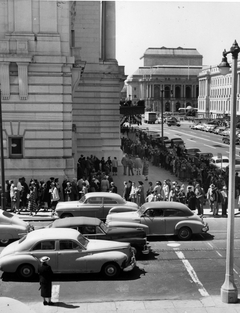
A Large Crowd Outside the San Francisco Opera House for Japanese Peace Treaty Conference
96-1131
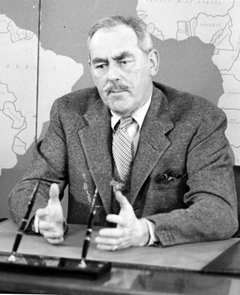
Secretary of State Dean Acheson Makes a Radio-TV Broadcast to the Nation from Washington
96-1142
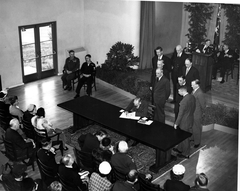
Dean Acheson Signs a Draft Tripartite Treaty among the United States, Australia, and New Zealand
96-1184
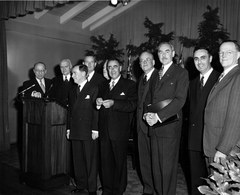
Dean Acheson and others at a conference relating to the draft tripartite treaty
96-1183
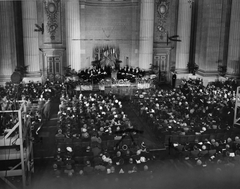
Opening ceremony of the signing of the North Atlantic Treaty Organization
59-536
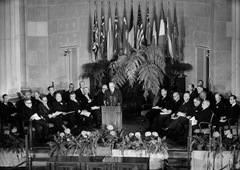
Dean Acheson speaks at opening of North Atlantic Treaty Organization signing ceremony
59-537
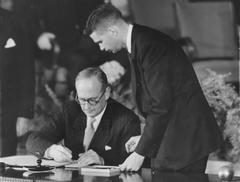
Halvard Lange signs North Atlantic Treaty for Norway as John W. Foley looks on
59-540
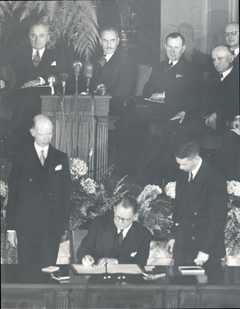
Dirk U. Stikker signs North Atlantic Treaty as Harry S. Truman and Dean Acheson look on
59-541
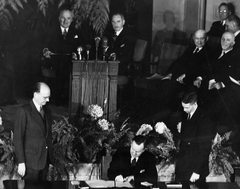
Lester Pearson signs North Atlantic Treaty as Harry S. Truman and Dean Acheson look on
59-543
